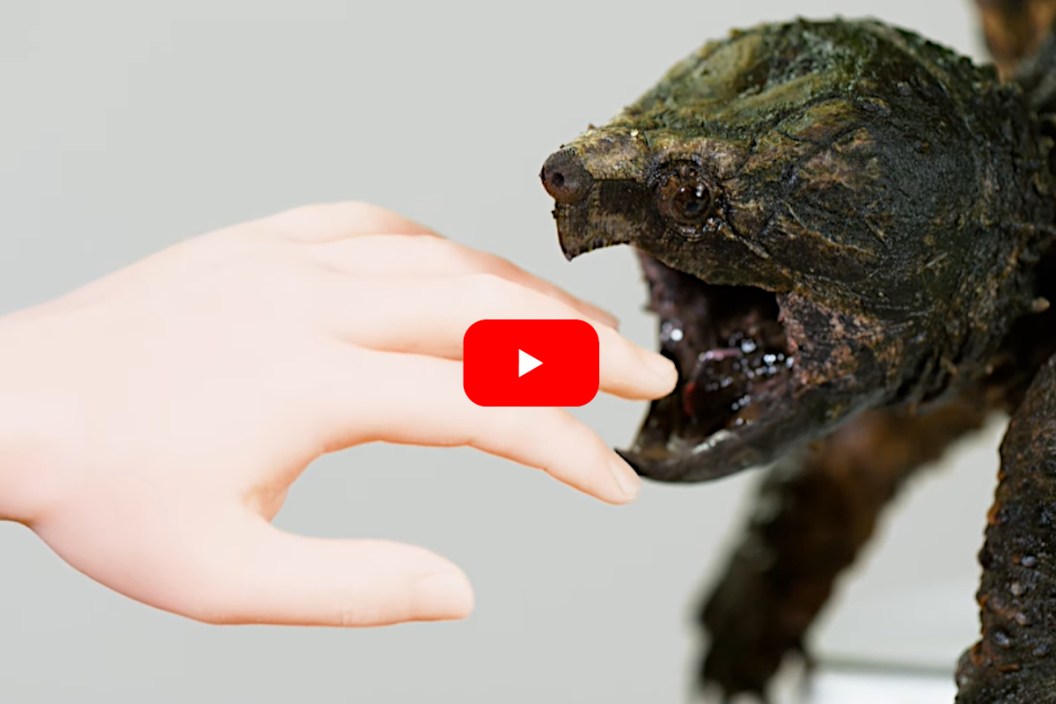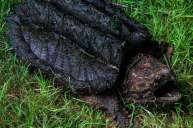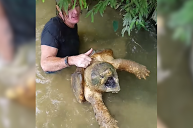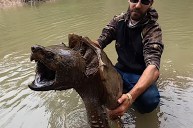This what an alligator snapping turtle can do to your fingers!
If there is one creature in North America that has a face that only a mother could love, it's the alligator snapping turtle, also known as "macroclemys temminckii" in the scientific realm. This animal is the largest freshwater turtle in the United States, and it has a large head and powerful jaws that will intimidate anyone.
These large turtles can reach up to 200 pounds and may have a carapace length of 20-30 inches long. Alligator snappers are often thought of as the dinosaur of the turtle world because they were around before the first dinos walked the earth and are still here to this day.
Because of that appearance and that nasty-looking hooked beak, many crazy claims have surfaced about these creatures. One of the biggest ones being that they can bite human finger off if given the opportunity. One of our favorite wildlife YouTube channels, Coyote Peterson decided to put this claim to the test using a latex hand. He shoots this test in super-slow motion. The test itself stars around the seven-minute mark.
While this test was not one hundred percent scientific, as Coyote notes, the latex hand is the same consistency as a human hand, just without bones. As you saw, it inflicted an incredible amount of damage. You wouldn't want to try this test with a real hand! It's worth noting that the alligator snapper has much more powerful jaws than its relative the common snapping turtle and a human finger WAS once found in the stomach of one! The only thing more impressive than the jaws is this animal's lifespan. In captivity they have reached 70 years of age or more. However, scientists theorize they may reach 200 years or more given prime conditions in the wild.
Speaking of the wild, these guys have a large historic range that includes the Mississippi River down to the Gulf of Mexico. They have been sighted as far north as Illinois, and Iowa. They have been found through parts of Missouri, Georgia, Indiana, eastern Texas, Kentucky, Tennessee. They are common in the Florida panhandle, which his one of the more likely places to see one in the wild today.
Either way, these are two reptiles you don't want to antagonize. We are just glad that the diet of these animals is made up mostly of amphibians, crayfish, small fish, snails, mice, snakes, and other small animals. Still, if you don't want to lose an appendage, we recommend keeping your hands far away from their mouths!
For more outdoor content from Travis Smola, be sure to follow him on Twitter and check out his Geocaching and Outdoors with Travis YouTube channels.
NEXT: THE AXIS DEER AND HOW THEY'RE IMPACTING PARTS OF THE UNITED STATES
WATCH





